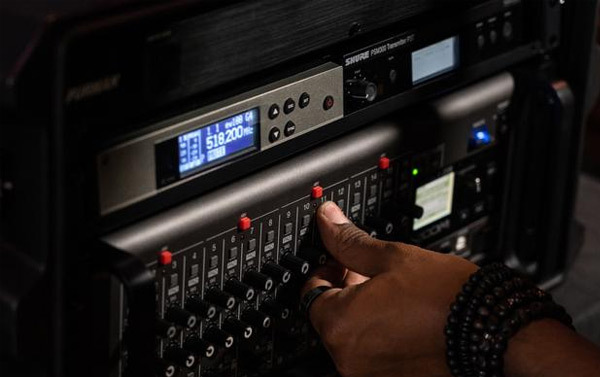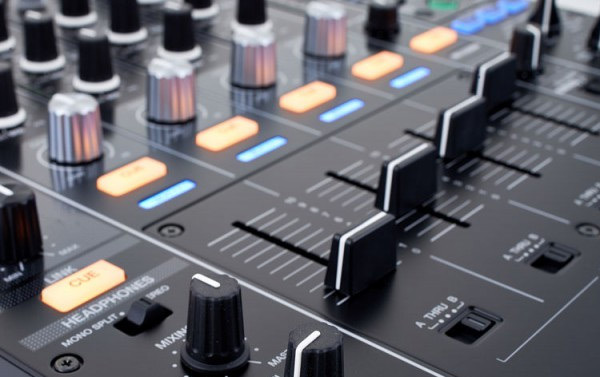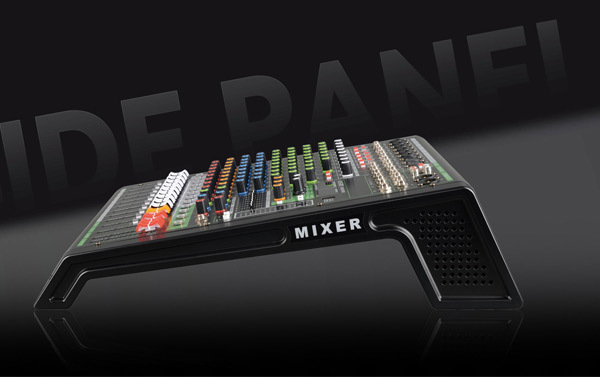Professional Box With The Secret Of Ordinary Sound Power Nominal
2024-07-08
When it comes to the parameters of the speaker, the power is the most mentioned by us. Although in recent years, everyone has not boasted about the peak power of PMPO, and has not seen the power value of hundreds of thousands of watts in the speaker, but can the power of the multimedia speaker of the speaker really be credible at present? It is even easy to see that the two speakers with the same power have completely different performances at medium or large volume, and the sound distortion occurs from time to time. Is this set of data related to power output a "digital game"?
The main function of the power amplifier in the speaker is to amplify the signal and provide sufficient power to the load (speaker). The influence of the power amplifier on the sound quality mainly depends on whether the input signal can be amplified and transmitted without distortion, so as to give the load enough power. The signal amplified and transmitted by the power amplifier is different from the simple harmonic signal, which is a complex signal with instantaneous change.
If we look at this signal from the waveform, this original signal has many spikes, their energy is not large, but the peaks are very sharp and high. These spikes contribute little to loudness, but have a large effect on sound quality. If the attack clipping, the amplified sound sounds dry and hard. This has a certain relationship with the details of what we usually call objective listening. If we only pay attention to the transmission of energy (the corresponding amount is loudness) and do not pay attention to the change of waveform in the transmission process (forming distortion), then we may hear the sound can be very loud, but not pleasant.
For active speakers, the power amplifier is partially done inside the speaker, and what it does is to drive the speaker to bring enough output power to the speaker. However, the nominal writing of speaker power we see is not very standard. The power marked "speaker" by ordinary speaker manufacturers refers to the "output power (RMS)" of the power amplifier (part of the power amplifier circuit of the active speaker). RMS(root mean square) refers to the root mean square. At present, most of the multimedia speaker labels are root mean square power.
The root mean square power is different from the uniform power and the rated power. The detailed algorithm is to take the mean value of the square of the power value of each point of the sample and then open the square. We will not delve into how to calculate the root mean square for the time being. What we need to discuss next is the relationship between the "root mean square" power and the rated power and the speaker power.
As mentioned earlier, the signal amplified by the power amplifier is a complex signal. According to the investigation results of various musical instruments and program signals of different operas in acoustic engineering, the ratio of the maximum root mean square power (I. e. the peak-peak power of the program signal on the load) to the uniform root mean square power (I. e. the uniform power of the program signal on the load) of most local program signals is 3~10, with a maximum of 12.7.
If the rated power of the power amplifier corresponds to the uniform root mean square power of the program signal, the maximum output power of the power amplifier should be 3 to 10 times to ensure that the output signal does not exhibit clipping. This is why we choose the power of the power amplifier to be much larger than the uniform root mean square power of the amplified program signal, which is what we usually say power storage.
Judging from the current low-end products, the maximum output power of the power amplifier should not be 10 times the power storage of the signal root mean square power, and the power storage is definitely different when designing. This is one of the reasons why we will encounter distortion problems at different volumes or higher volumes during normal tests. On the other hand, multimedia speakers rarely clarify whether this power is rated power, maximum output power, output RMS power and even speaker power when labeling power, which is a very chaotic parameter index.
In addition, if we pay attention to the nameplate on some speakers, there is also a value related to power. What is the relationship between this value and the output of the power amplifier? In the design document, we can see the following narrative: "In order to ensure the safety of the speaker system to which the power amplifier is connected, the rated output power of the power amplifier is requested to be equivalent to the nominal power of the speaker system to which the power amplifier is connected", "In order to ensure sufficient power storage, a power amplifier 1.2 to 2 times the power of the speaker is usually selected", etc. This kind of formulation practice is incorrect, the power of the power amplifier is not the same concept as the power of the speaker.
The output power of the power amplifier generally refers to the sinusoidal output power on a certain distortion limit. We usually see manufacturers indicate that the regular total harmonic distortion is 0.1 after power. When the output signal of the power amplifier on the rated load reaches the distortion, the output voltage is called the maximum output voltage. Using this voltage to calculate the output power of the power amplifier is the nominal output power of the power amplifier, which can also be understood as the maximum output power of the power amplifier.
The nominal power of the speaker, manufacturers often provide powder noise power, which refers to the power that is fed to the regular imitation program signal within the rated frequency range of the speaker and works continuously for 100 hours without thermal and mechanical damage. Obviously, these two powers are made from completely different angles of the rules and tests, the two are not comparable. If the manufacturer can provide the sinusoidal power of the speaker (referring to the power fed when the sinusoidal signal is used as the test signal), the two are comparable.
However, manufacturers generally do not provide this data. So, for the speaker, the speaker's powder noise power and sine power can have a certain correspondence! The powder noise power and sinusoidal power of the speaker are completely different from those of different structures, different materials and different specifications, and the latter is also related to frequency. Thus, in the speaker and power amplifier design with power amplifier power and speaker nominal power for comparison to characterize its power storage method is not desirable.
Obviously, there is no point in comparing the number of speaker power and amplifier power. From the above, we can also understand that the topic of whether the similar power and power storage can be sufficient can only be set up on the feeling of objective listening. It is meaningless to see the true labeling on the sound box. As the labeling methods are not standard and the specifications are different, there is naturally no comparability.
RELATED INFORMATION









